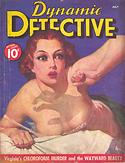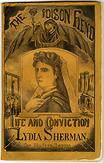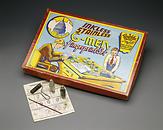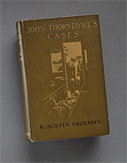Riding the Forensic Wave
Science and the law have always had theatrical elements. To command attention and gain acceptance, scientists demonstrate their findings and credentials, and present themselves as authorities before courts of scientific opinion, courts of law, and courts of public and private opinion. But practically from the inception of the field, another group of people have used stories about forensic science to make the body visible and legible. Writers and publishers, and later directors and producers, have made murder and the dead body, and the procedures of forensics, visible to a wider public—in the form of entertaining non-fictional and fictional narratives.
Since the 17th century, narratives have mixed violence and murder, police and scientific investigation, and courtroom drama—and have attracted a mass audience. But the intensity of interest in forensics is now vastly greater. Forensic entertainments have achieved an unprecedented level of popularity.
The new forensic books, films, and television shows differ markedly from their predecessors:
- Death and the dead body are depicted in graphic detail. The camera shows the wounds, disfigurement, and decomposition of the body. (Older films and books didn't linger on the details.)
- The forensic scientist or team is the hero; the decisive action occurs at the crime scene and in the laboratory. (In older murder mysteries, an amateur sleuth, brilliant private detective, or police inspector is the protagonist.)
- "Hi-tech" science solves the mystery.
The forensic emphasis intensifies the experience of the crime narrative. Viewers get the pleasure of seeing moral order and reason prevail over evil and death through the procedures of science and law. The distress, disorder, and moral rupture of murder are enacted within a reassuringly formulaic structure. We get to satisfy a need to see death, disorder, and evil—which loom so large in our lives, but are veiled by legal and criminal procedures, and professionalized funerary practice. We enjoy exposing ourselves to physically and emotionally provocative images of death and the dead body. Today, millions of readers, filmgoers, and television watchers find such stories enormously appealing.
Forensic spectacles and entertainments
People have always been entertained by tales of violence. In the 1600s, cheap pamphlets found a mass readership with sensational accounts of heinous murders. Forensic medicine rarely played a role in these narratives. But in succeeding centuries, science slowly became more prominent—in fictional mysteries that featured scientific detectives like Sherlock Holmes, in true crime magazines, and in articles on scientific crime detection.
Scientific sleuths
"When Sherlock Holmes whipped out his magnifying glass to examine a flake of Latakia tobacco found on the Smyrna rug in the Boscombe Valley affair, he became not merely a very charming character in detective fiction but an exponent of a whole new way of looking at life…."
—Henry Morton Robinson, author, 1935
"Sherlock Holmes was the first to realize the importance of dust. I merely copied his methods."
—Edmond Locard, French forensic scientific expert, early 20th century
The detective story has been a staple of popular fiction since the 1840s. Influenced by the success of the Sherlock Holmes stories, the scientific detective enjoyed a brief vogue in the early 1900s. But, until recently, most fictional detectives solved their mysteries through interviews with suspects and witnesses, ending with the revelation of the killer's identity, motive, and method. The mind of the solitary brilliant detective was the technology. Today, the investigator is often part of a team that uses forensic science, at the crimescene and in the laboratory, to solve the case.
Utopian forensics
Glowing newspaper and magazine accounts of forensic technologies, real and imaginary, fueled public support for scientific crime detection.
Today, forensic entertainments have attained new heights of popularity. Unlike older tales of murder, modern mysteries cast the forensic scientist as the hero, display the victim's body and its interior, and solve the case through science. Audiences can experience the distress, disorder, and moral rupture of murder in a reassuringly formulaic portrayal of legal and scientific order.



